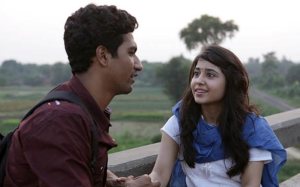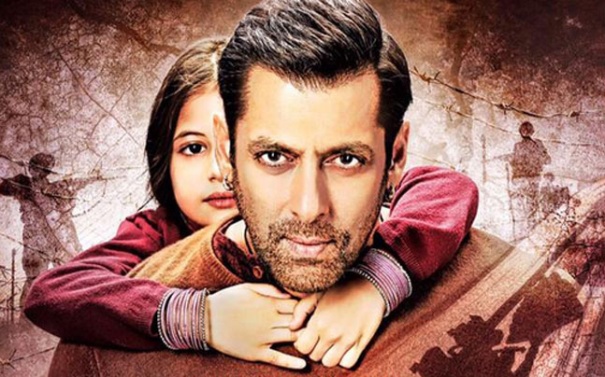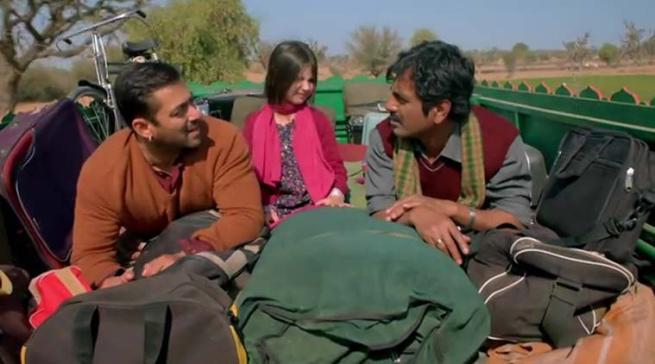Drishyam is like a steam engine that runs out of steam right
before it is about to reach the destination. Enough tension is built, a few
thrills are thrown in between but the finale is rather underwhelming and
somewhat predictable. The fact that I could pre-empt Nishikant Kamat’s ‘ace in
the pack’ well 15-20 minutes before the climax, left me with a bad taste in the
mouth.
Drishyam arrives in theaters this weekend with a huge
baggage on its back. The film is a remake of a much-acclaimed and commercially successful
Malayalam film with the same name that starred Mohanlal. It was subsequently remade
in other three Dravidian languages – Tamil (with the legendary Kamal Hassan in
lead), Telugu and Kannada. Also, I am told that the original story of the film
(credited to Jeethu Joseph, who also directed the original Malayalam version)
is actually inspired from a Japanese thriller, The Devotion of Suspect X. So,
if you closely look at it, Drishyam is actually an ‘Inception’ of remakes –
remakes of remakes and that too featuring some actors of great caliber. So, the
makers did show some guts when they decided to remake the film in Hindi.
The film traces the life of Vijay Salgaonkar (Ajay Devgn),
an ordinary cable TV network owner in a Goa village, and his family comprising
of his wife Nandini (Shriya Saran) and two daughters. We are repeatedly told
Vijay is a 4th grade dropout and an orphan. We are also frequently reminded
that Vijay is a movie buff and watches films in his office almost every other
night. Also, whenever he watches a Sunny Leone film, he quickly heads back home
to be with his wife. Hmm!
In fact, the first half of the film tries a bit too hard to
‘establish’ the character of Vijay for us. You are almost forced to memorize
that Vijay is a miserly man but he also loves his family. He is fond of hanging
out at a local café and does not have a great equation with a local corrupt
policeman. In between all this groundwork for the supposed master cover-up that
surfaces later in the film, we are also exposed to a freak accident cum crime
that Vijay and his family must cover up. Frankly, the circumstances that lead
to the crime seem too juvenile to be true and the family’s way of dealing with
it is outlandish to say the least.
Despite its conveniences and ordinariness, Drishyam’s first
half does have some tense moments that ignite the hope for a riveting second
half. The entire sequence where Vijay disposes off a crucial evidence of crime
is fascinating and the overall mood is nicely pepped up by an excellent
background score (Sameer Phatarpekar). Right before the interval, IG Meera
Deshmukh (Tabu) makes an entrance and the stage is set for a promising cat and
mouse game.
The second half does have some thrills and a few well-executed
sequences. The sequence where IG Meera and officer Gaitonde (Kamlesh Sawant)
threaten and beat up Vijay and his family is impactful and chilling. But the
eventual finale is a big letdown in terms of impact and compactness. After a
long drawn chessboard game between the police and Vijay’s family, the
‘revelation’ at the end does not excite. I obviously cannot divulge much
details about the climax but there are ample loose ends which leave you
unsatisfied.
Also, Drishyam is undone by a unidimensional style of
storytelling and treatment. You know the answer to that coveted question –
whodunit, all along. The twists and turns in between the narrative do not match
up to the hype or tension that film promises through its premise and background
score. IG Meera’s and the entire police department’s virtual surrender in front
of the ‘visuals’ shown by Vijay is unfathomable. They know it all along, move
in the right direction, dig up all the right evidences and suddenly give up on
the suspected culprits. Strange!
In the acting department, Ajay Devgn is his usual brooding
and glaring self. There are occasions where he looks uninterested, especially
in the stretched and length second half. Tabu is caught in the cauldron of
playing a tough cop and a sobbing mother. She does a better job of the later
and her endeavor to project herself as a super cop does not create much impact.
Shriya Saran as Ajay Devgn’s wife emotes pretty well and there are some scenes
where you can almost feel the fear in her eyes. Rajat Kapoor, who plays Tabu’s
husband, makes an impact with his restrained and calculated performance.
Drishyam is simply not the film that thrills, excites or
surprises you. It is lethargic, lengthy and unidimensional. I have not seen any
of its other remakes or the alleged Japanese inspiration, but I do have certain
reservations even with the otherwise ‘acclaimed’ and supposedly ‘mind blowing’
story of the film.
Nishikant Kamat’s Mumbai Meri Jaan and Force were way more
enjoyable and thrilling. Drishyam is simply disappointing.
Rating: ** (Average)



 Masaan’s portrayal of the Ganga and its Ghats in Varanasi is innately disturbing but hauntingly beautiful. You are constantly at unease when visuals of burning death pyres hit you at an alarming regularity but never ever you are able to take your eyes off the screen. And that’s the biggest achievement of Masaan and its makers. They throw the greatest reality of life (how ironic that it is nothing but death) on your face but juxtapose it with subtle messaging and a heartwarming story that grips you like a hawk’s claws. Masaan haunts you long after you have left the theater. The visuals stick to your brain.
Masaan’s portrayal of the Ganga and its Ghats in Varanasi is innately disturbing but hauntingly beautiful. You are constantly at unease when visuals of burning death pyres hit you at an alarming regularity but never ever you are able to take your eyes off the screen. And that’s the biggest achievement of Masaan and its makers. They throw the greatest reality of life (how ironic that it is nothing but death) on your face but juxtapose it with subtle messaging and a heartwarming story that grips you like a hawk’s claws. Masaan haunts you long after you have left the theater. The visuals stick to your brain.




